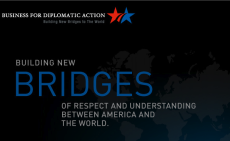The CPD Blog is intended to stimulate dialog among scholars and practitioners from around the world in the public diplomacy sphere. The opinions represented here are the authors' own and do not necessarily reflect CPD's views. For blogger guidelines, click here.

For years, the rest of the world has looked to America – either with gratitude or resentment – as the world’s policeman. Now, that 911 call may be rerouted.

The world of exchange diplomacy could learn a lot from this small initiative gone big.

The Mexican Consulate in San Francisco looks closer at the PD role of diaspora artists.

How an annual Indian festival is forging permanent friendships in Egypt.

We need an army of corporate diplomats, from multiple sectors, engaged in strategic corporate diplomacy efforts to shore up America’s soft power reserves.

Turkish faith-based NGOs are harnessing a positive image for Turkey in recipient countries.

A recent book from Martha Bayles, a lecturer in humanities at Boston College, tackles the question of how American entertainment industry products confound official U.S.

Is anyone better positioned to ‘inform and influence’ international audiences today?
Pages
Visit CPD's Online Library
Explore CPD's vast online database featuring the latest books, articles, speeches and information on international organizations dedicated to public diplomacy.
POPULAR ARTICLES
-
November 3
-
November 5
-
November 13
-
October 16
-
October 16
Featured Blogger
Join the Conversation
Interested in contributing to the CPD Blog? We welcome your posts. Read our guidelines and find out how you can submit blogs and photo essays >.








